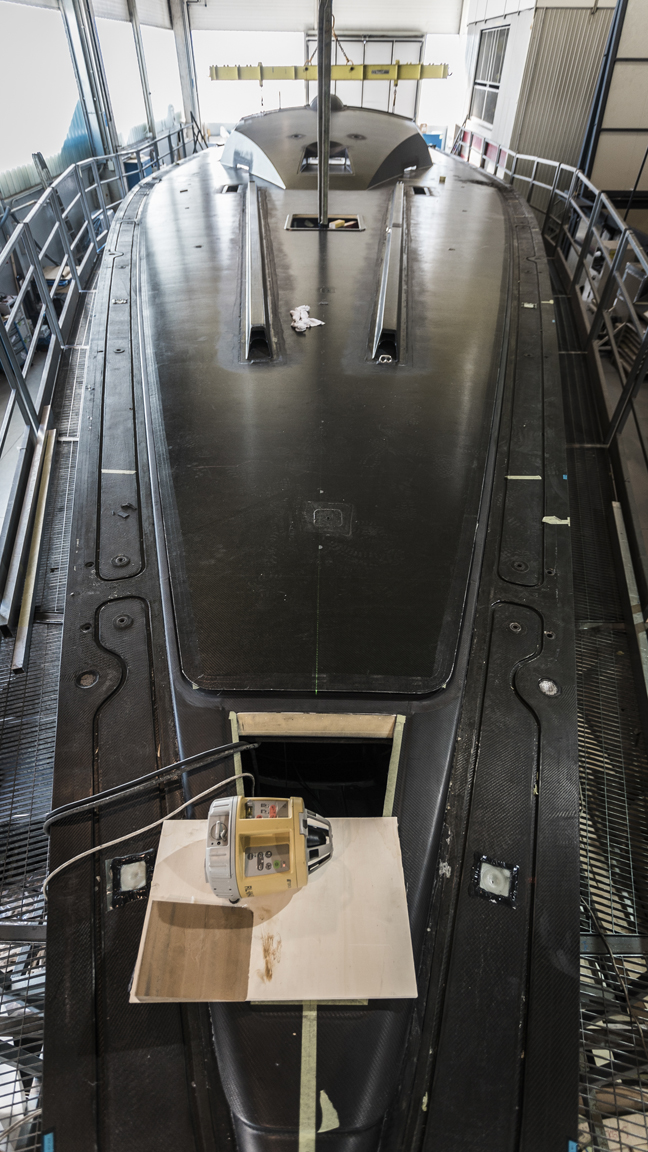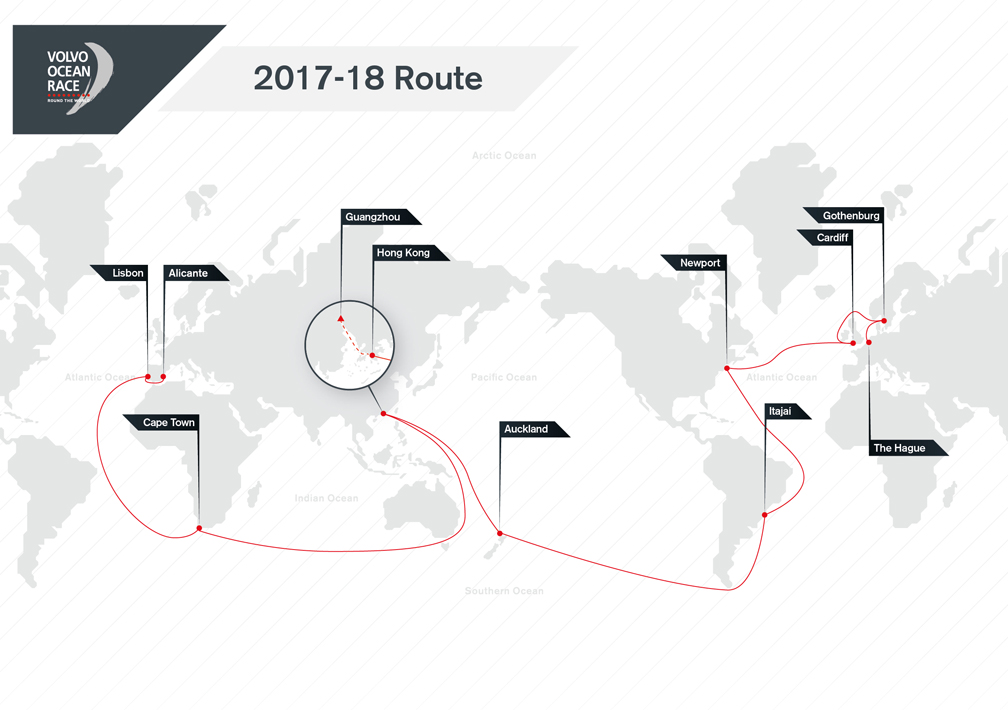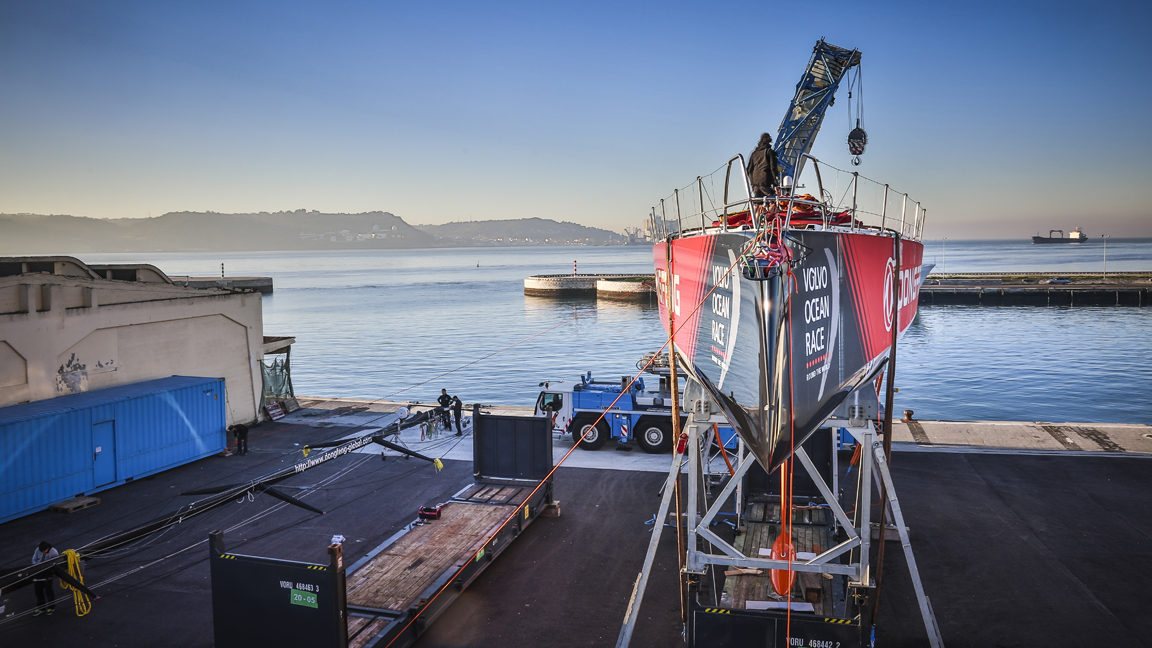Risks to reap rewards in Volvo Ocean Race
Organizers of the Volvo Ocean Race adopted new rules designed to induce skippers to take more chances.
-
 The deck for the eighth Volvo Ocean 65, constructed at Multiplast in Vannes, France, being transported to Persico Marine in Bergamo, Italy, for the rest of the build process. Photo: Brian Carlin/Volvo Ocean Race
The deck for the eighth Volvo Ocean 65, constructed at Multiplast in Vannes, France, being transported to Persico Marine in Bergamo, Italy, for the rest of the build process. Photo: Brian Carlin/Volvo Ocean Race -
-
The Volvo Ocean Race announced several changes for the next edition of the round-the-word race, which begins October 2017 when the fleet leaves Alicante, Spain for the first leg, which is just a short hop to Lisbon, Portugal.
Among the rule changes are double points on long trans-oceanic legs and various bonuses, new crew size rules that encourage teams to have more female sailors, on-board reporters that can rotate among the boats and a new route that includes more Southern Ocean racing. At close to 45,000 nautical miles, it will be the longest edition of the marquee offshore race.
Organizers made the change in the scoring system to encourage strategic risk-taking by the teams, designed to open up the competition in an era of close one design racing. It should give teams an incentive to gamble more often to split the fleet.
Racers will earn double points for the two Southern Ocean legs, from Cape Town to Hong Kong, and Auckland to Itajai, Brazil, and the North Atlantic leg from Newport, Rhode Island to Cardiff, Wales.
Additionally, the winner of each leg will earn a bonus point, as will the first team to round Cape Horn, in a nod to the mythical significance of this turning point in the race, and to the team with the best total elapsed time overall. -
 Race route of the Volvo Ocean Race
Race route of the Volvo Ocean Race -
-
One fewer on the crew
On the crew front, all-male teams will be limited to seven sailors, one fewer than in 2014-15. Mixed teams will be given a significant numerical advantage. Combinations can include seven men and either one or two women, five men and five women, seven women and one or two men, or 11 women.
"If female offshore sailors want to compete at the same level as the best in the world then they need to train and race with the best," said Ian Walker, the winning skipper in the 2014-15 race. "It would be very hard to compete with only seven people on a Volvo Ocean 65 against teams of eight or nine. This new rule will almost certainly force teams to hire women and that will create a great platform for learning."
Team SCA's all-female crew finished third in the In-Port Race series in the last VOR and became the first to win an offshore leg in 25 years. But it still saw a ceiling in its overall offshore performance without being able to learn from the more experienced sailors.
In the last race, onboard reporters were assigned to each team. In the next edition, a team of on-board reporters will be created that can move from boat to boat on leg to leg, balancing both integrity and trust.
As part of mandatory qualifiers, the fleet will sail in the Rolex Fastnet Race, one of the most revered and feared tests in sailing, from England to the Fastnet Rock off the southwest coast of Ireland and back to England. The Volvo fleet will then race from Plymouth, England, to Lisbon to complete Leg 0. The fleet will then sail a new prologue from Lisbon to Alicante, Spain. -
 The Dongfeng boat, the first out of refit, is launched in Lisbon in January 2017. Photo: Amalia Infante/Volvo Ocean Race
The Dongfeng boat, the first out of refit, is launched in Lisbon in January 2017. Photo: Amalia Infante/Volvo Ocean Race -
For more info, see www.volvooceanrace.com
-
Chipp Reid
-
-
